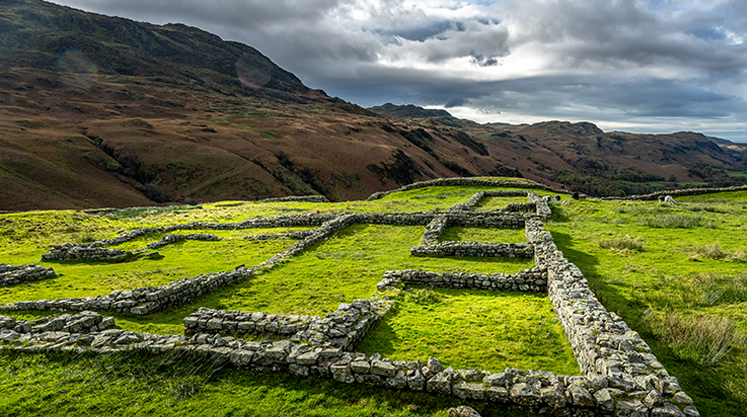
To be part of the World Heritage Site family, sites must be of outstanding universal value. The English Lake District became a World Heritage Site in 2017 under UNESCO’s Cultural Landscape category, meaning that it is globally important for ‘the combined works of nature and of man’. There are three themes which sum up why the Lake District is so important. They are all interlinked and helped to shape the Lake District both in terms of its land use and protection:
More information on these can be found here: The English Lake District
With grant funding from the National Grid’s Landscape Enhancement Initiative (Landscape Enhancement Initiative (LEI) | National Grid ET ) the Lowther Estate has completed its ‘Highlighting History at Lowther’ project.
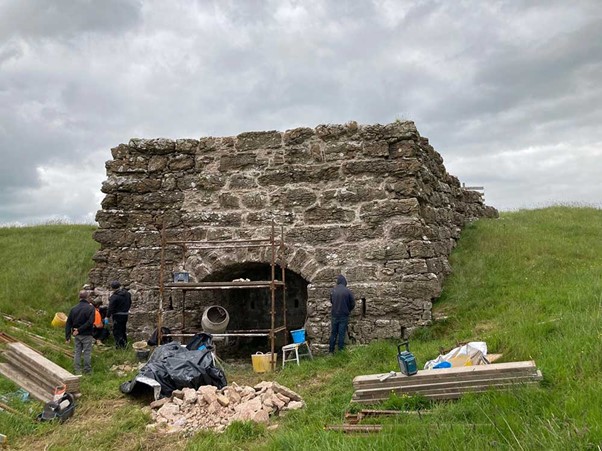
There were 3 training days in the use of lime mortar in August 2023. These were successful with positive feedback: ‘I just wanted to say a really quick thank you for the Lime course today. The guys were absolutely great – very knowledgeable and the course was really informative and good fun! It was a pleasure to be a part of.’
The benefits of the project mean that the historic environment of the Registered Park and Garden will be conserved for the future; skills and knowledge about the historic environment have been, and will continue to be, exchanged and developed in the local community and the enjoyment of the rich archaeology and historic landscape will be enhanced.
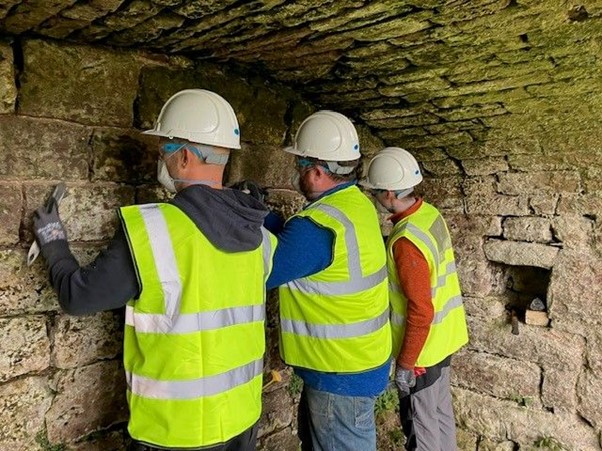
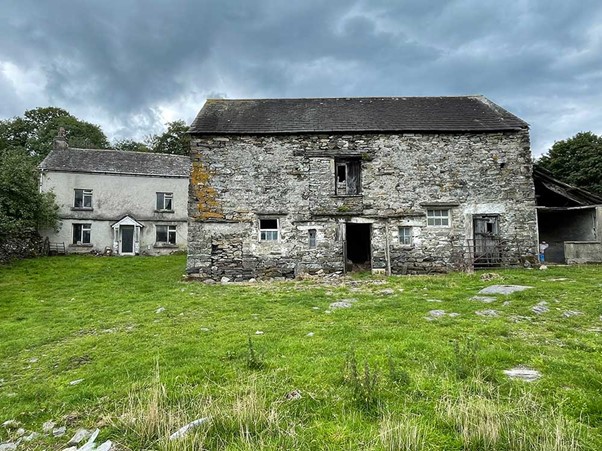
In 2023 we served a Building Preservation Notice at Collinfield Farm in the Winster Valley.
This 17th century farmhouse, with two 18th century bank barns, was put up for sale on the open market and we were alerted to the historic interest of the buildings as well as interest being expressed by potential purchasers in demolishing the buildings and redeveloping the site.
A Building Preservation Notice was served in August 2023 which gave the buildings immediate protection. The site was subsequently assessed by Historic England and the farmhouse and both bank barns were listed Grade II in January 2024.
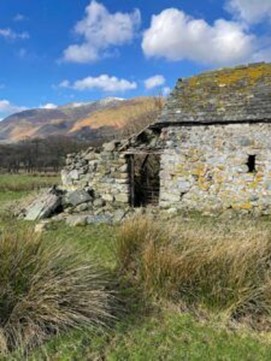
Following on from feasibility studies completed in 2022-23 and funded through the Farming in Protected Landscapes programme (FiPL), we have been able to fund emergency repairs at Low Fell End, Witherslack.
This is a Grade II-listed farmstead, with a 17th century farmhouse and 18th bank barns where the latter needing urgent works to stabilise masonry and repair the roof. Works began in December 2023 and will be completed in 2024.
In October 2023, DEFRA launched the Historic Building Restoration Grant scheme, a ring-fenced pot of money, to be managed through FiPL for traditional barn repairs. We have been working with farmers and landowners to get as many of the projects developed in 2023 into this scheme, supporting 6 building restoration projects to successfully access £900,000 of HBRG funding. We hope to be able to complete repairs to over 15 sites in 2024.
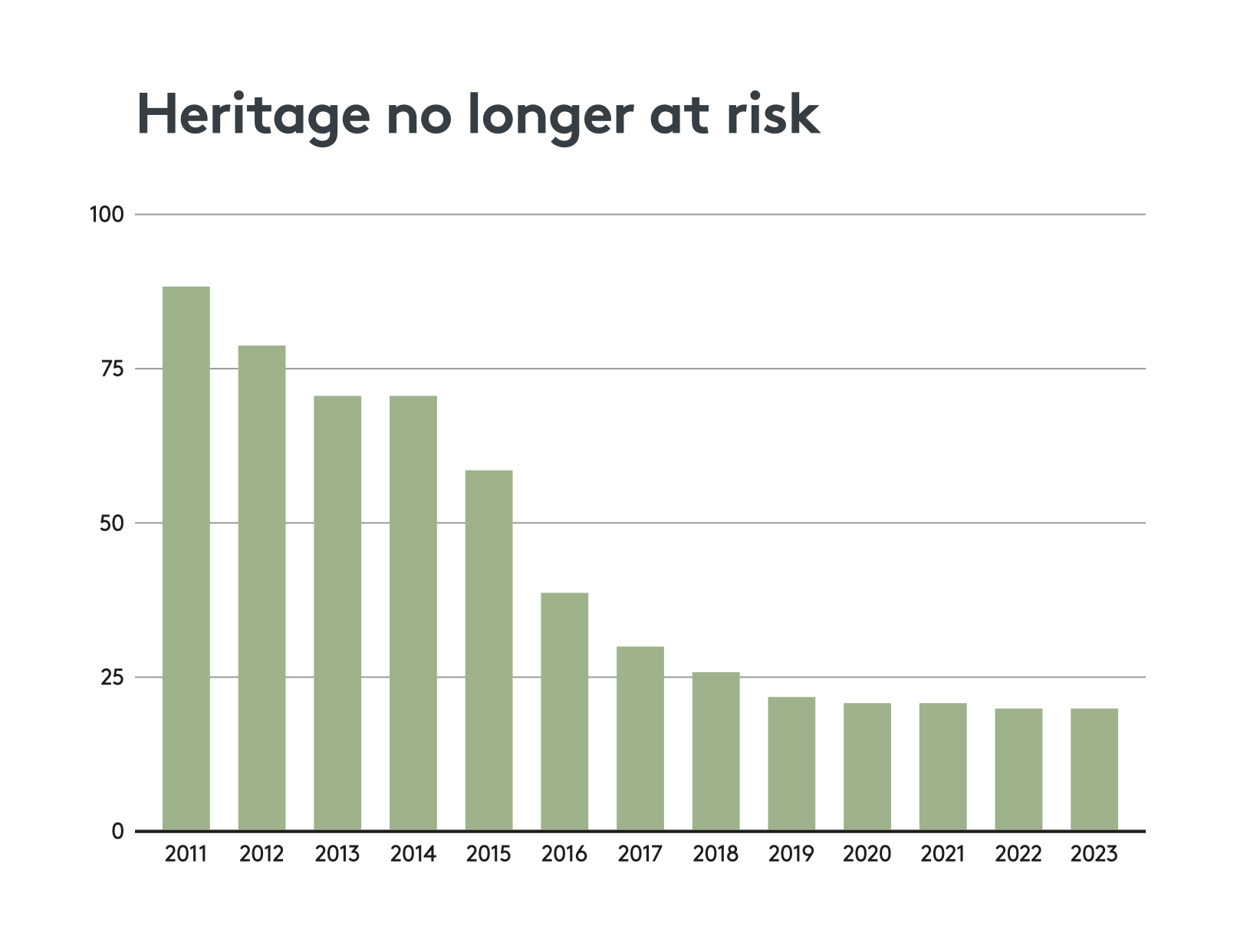
Graph: showing the number of heritage sites at risk reducing over time from 2011 to 2023
Over the last 12 years the amount of ‘Heritage at Risk’ in the Lake District has substantially declined in relation to listed buildings and scheduled ancient monuments. The rate of removal from the Register has slowed recently, as the last few sites present more complex management challenges requiring more resource.
A recommendation from the World Heritage Committee in September 2023 was that we should produce an Interpretation Strategy for the English Lake District World Heritage Site (WHS). The Interpretation Strategy is a tool for the delivery of interpretation which will help people to make sense of, and understand more about the WHS and its heritage, and communicate its Outstanding Universal Value (OUV; what makes the Lake District of global significance) to residents, businesses, and visitors. It will support the Partnership to engage those communities who are strongly associated with OUV and will lead to consultation with each valley community. It will see the Partnership building on its existing work engaging with farming communities.

The Strategy will review existing interpretation undertaken by many Partner organisations and others and will identify the various audiences we are trying to engage with. It will also propose actions that need to be undertaken to deliver quality interpretation.
The draft Interpretation Strategy has been agreed by the WHS Steering Group and we will now consult with UNESCO, the Partnership, Business Task Force, and local communities. Once we have received feedback, the Interpretation Strategy will be updated accordingly and adopted, and then work to deliver it will begin; the final version of the Strategy will include an action plan.
Last year we reported on the 10th Anniversary of the Archaeology Volunteer Network. The Network continues to make a valuable contribution to the historic environment of the National Park through bracken management on Heritage at Risk sites and undertaking archaeological surveys to find previously unknown sites. This information is vital to ensure we can provide accurate and detailed advice to those looking to undertake land-use change, enter agri-environment schemes and submit planning applications. This year one of our groups have been surveying in the southwest of the National Park at Cragg Farm, Eskdale.
Here the team have undertaken detailed archaeological survey of sites identified on the farm, revealing that the location of the first farm on the site, dating from around the 1400s, could well have been to the east of the existing farmhouse. The site has a longhouse with a kitchen garden, a livestock enclosure and two associated buildings next to a revetted trackway heading through the Eskdale valley. Another group of buildings higher up towards the fell are a possible shieling settlement, where farmers would have taken their stock in the summer months, putting them out to graze on the fell. They also found potash kilns, where green bracken was burnt to produce a soap used to clean fleeces for the woollen mills, other longhouses and a dam. This information is being used by the owners of Cragg Farm to inform their agri-environment scheme and to understand the cultural landscape in which they live.
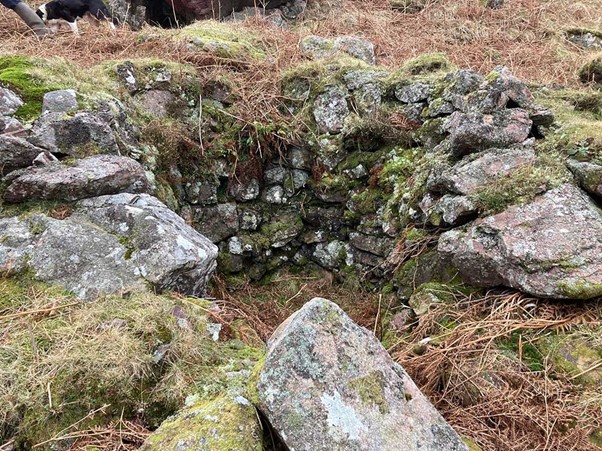
Photograph of a potash kiln at Cragg Farm in Eskdale
The Farming in Protected Landscapes programme (FiPL) provided funding to create promotional material highlighting work on farming-related nature recovery projects within the World Heritage Site (WHS). It was intended to provide examples to inspire other farmers and local community groups to do more for nature recovery, and also demonstrate how FiPL can assist with delivering farming-led nature recovery and farm diversification.
The Partnership is committed to nature recovery, and it is therefore important to promote farming-led nature recovery projects where farmers can receive funding to undertake such work. There is an urgent need to make this cultural landscape and its landscape-defining features more resilient to the effects of climate change, and in the long term be more sustainable.
Initially the promotional material produced (two roller banners) will be used at a World Heritage UK conference to be held in the Lake District - on WHS and Nature - to highlight activities within the WHS, engaging with a wider national audience attending.
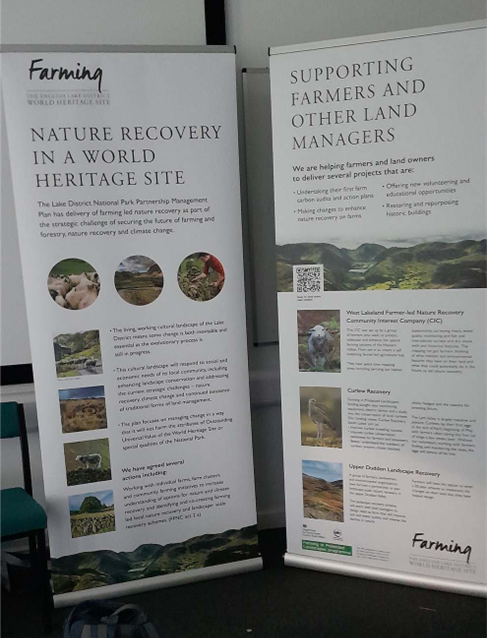
At a local - WHS site - level, this material can then be used by the Lake District National Park Authority’s Farming Officers and Rangers to take to farming events to explain how FiPL grant-aid can be used to help with farm diversification. Grants can provide additional income, support nature-friendly sustainable farms, sustain the cultural landscapes of family farms and assist farmers to take action to mitigate climate change.